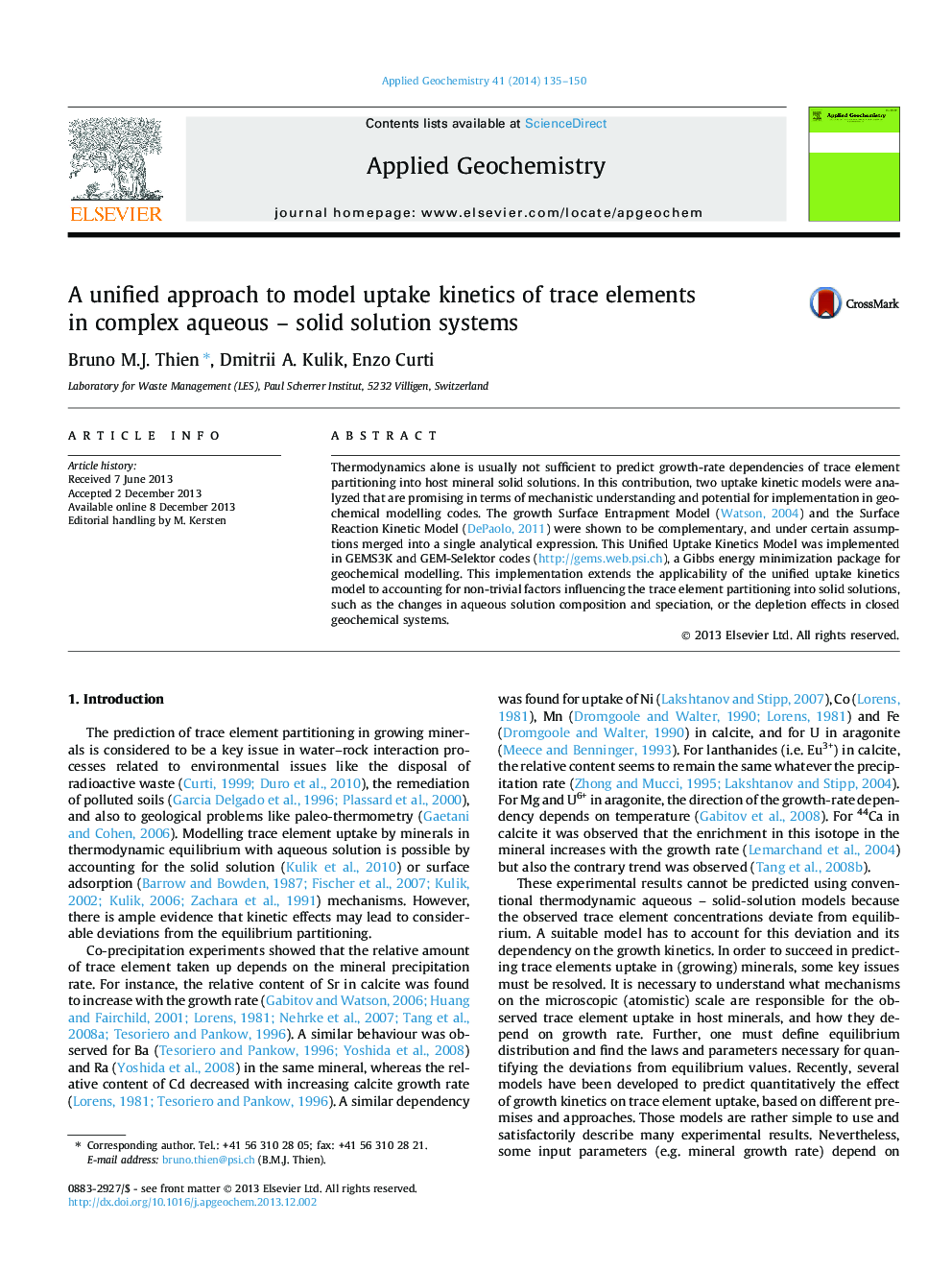| Article ID | Journal | Published Year | Pages | File Type |
|---|---|---|---|---|
| 4435872 | Applied Geochemistry | 2014 | 16 Pages |
•There are several models able to describe trace element partitioning in growing minerals.•To describe complex systems, those models must be embedded in a geochemical code.•We merged two models into a unified one suitable for implementation in a geochemical code.•This unified model was tested against coprecipitation experimental data.•We explored how our model reacts to solution depletion effects.
Thermodynamics alone is usually not sufficient to predict growth-rate dependencies of trace element partitioning into host mineral solid solutions. In this contribution, two uptake kinetic models were analyzed that are promising in terms of mechanistic understanding and potential for implementation in geochemical modelling codes. The growth Surface Entrapment Model (Watson, 2004) and the Surface Reaction Kinetic Model (DePaolo, 2011) were shown to be complementary, and under certain assumptions merged into a single analytical expression. This Unified Uptake Kinetics Model was implemented in GEMS3K and GEM-Selektor codes (http://gems.web.psi.ch), a Gibbs energy minimization package for geochemical modelling. This implementation extends the applicability of the unified uptake kinetics model to accounting for non-trivial factors influencing the trace element partitioning into solid solutions, such as the changes in aqueous solution composition and speciation, or the depletion effects in closed geochemical systems.
